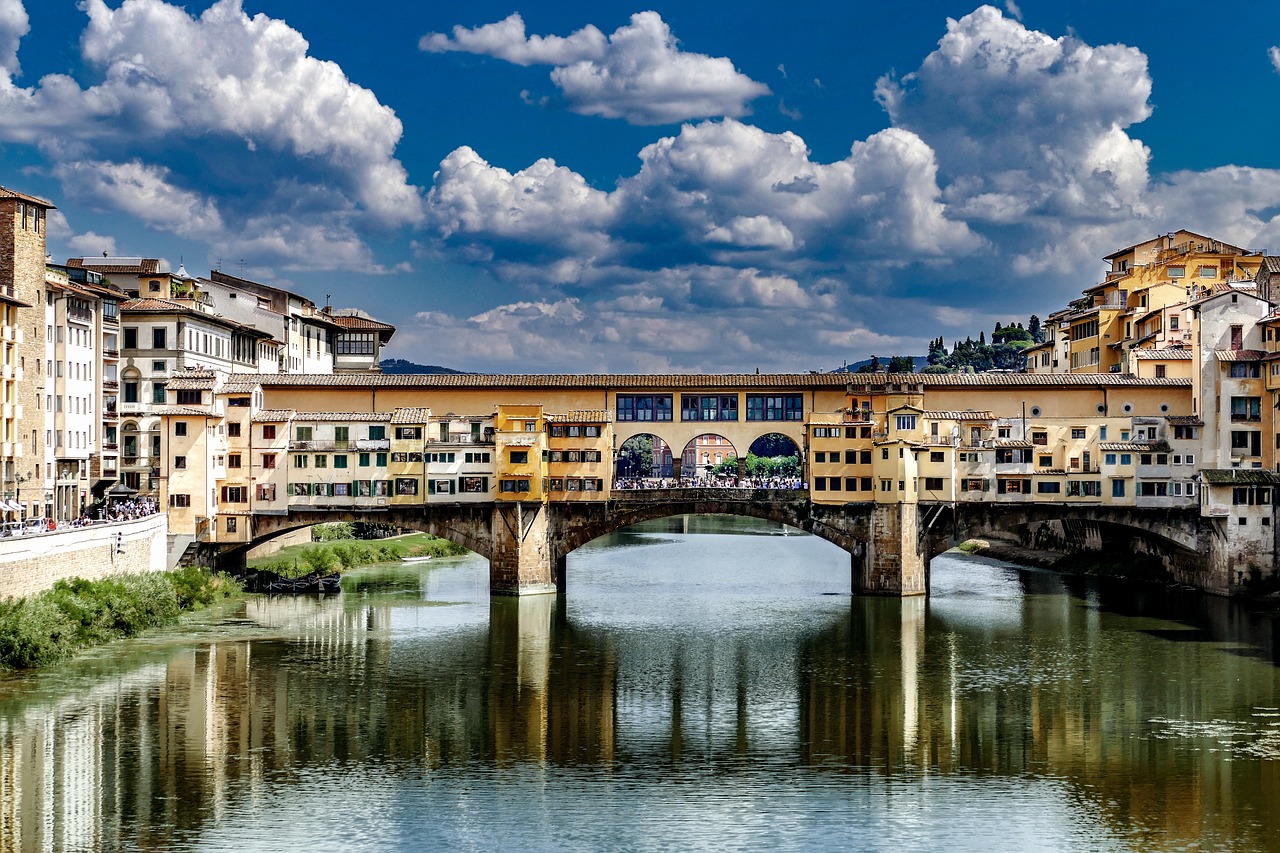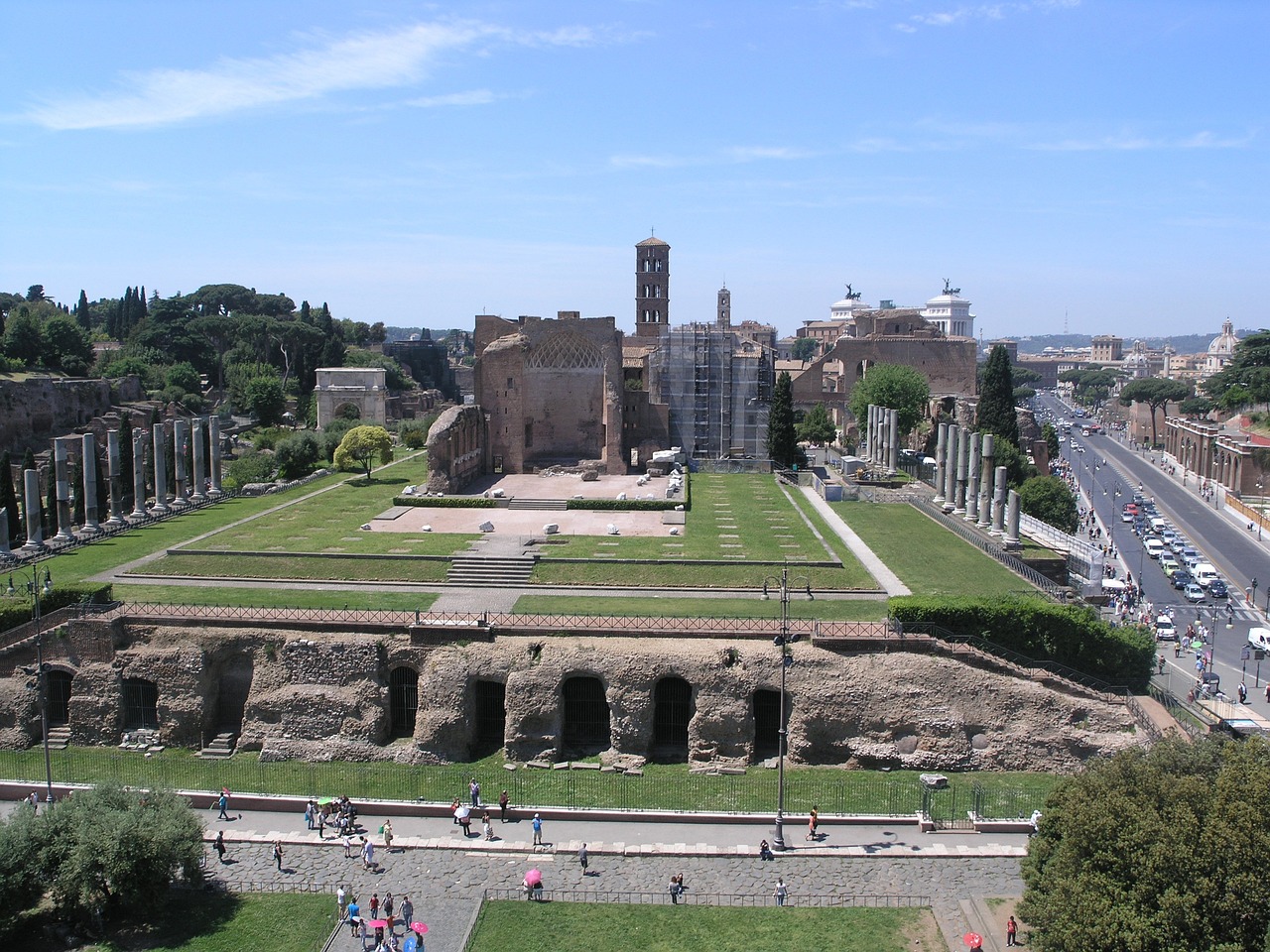The Enigma of the Ancient Roman Pantheon
The Ancient Roman Pantheon stands as a captivating enigma, shrouded in the mists of time and steeped in mystique. This revered collection of gods and goddesses, intricately woven into the tapestry of Roman society, holds a wealth of secrets waiting to be unveiled. As we embark on a journey through the annals of history, we are beckoned to explore the origins, symbolism, rituals, and legacy of these divine beings that once held sway over the ancient world.

Origins and Evolution of Roman Deities
The ancient Roman pantheon is a fascinating tapestry woven with threads of mythology, history, and divine intrigue. From the humble beginnings of Etruscan and Greek influences to the grandeur of iconic gods and goddesses, the origins and evolution of Roman deities are a mesmerizing journey through time.
As the Romans expanded their empire and encountered new cultures, their religious beliefs underwent a transformation, absorbing elements from the Etruscans and Greeks. This fusion gave rise to a diverse pantheon where deities evolved to reflect the changing needs and values of Roman society.
The early Roman gods were often personifications of natural forces, such as Jupiter, the god of the sky and thunder, and Neptune, the god of the sea. Over time, these deities acquired human-like qualities and characteristics, becoming more relatable to the Roman people.
The influence of Greek mythology was profound, with many Greek gods and goddesses being equated with their Roman counterparts. For example, Jupiter was identified with Zeus, Juno with Hera, and Minerva with Athena. This syncretism enriched the Roman pantheon, adding layers of complexity and depth to the divine hierarchy.
Through conquest and cultural exchange, the Roman pantheon continued to evolve, absorbing deities from conquered lands and adapting them to fit within the existing religious framework. This dynamic process of assimilation and reinterpretation ensured the vitality and relevance of Roman mythology throughout the centuries.
- What was the significance of Jupiter in Roman mythology?
- How did the decline of the Roman pantheon impact society?
- What is the legacy of Roman mythology in modern times?
Jupiter, the king of the gods, played a central role in Roman religion as the protector of the state and the enforcer of divine order. His thunderbolt symbolized his power and authority, making him a formidable figure in the pantheon.
The rise of Christianity marked a turning point in Roman religious practices, leading to the gradual decline of traditional deities. This shift had far-reaching implications for Roman society, reshaping beliefs, values, and cultural norms.
The enduring legacy of Roman mythology can be seen in various aspects of contemporary culture, from the names of planets to the architectural designs inspired by ancient temples. The timeless appeal of Roman deities continues to captivate and inspire artists, writers, and scholars around the world.

Major Gods and Goddesses
The pantheon of ancient Roman deities is a tapestry woven with the threads of power, wisdom, and divine intrigue. Among the myriad gods and goddesses that populated the Roman religious landscape, several stood out as paramount figures, commanding reverence and awe from mortals and immortals alike.
**Jupiter**, the king of the gods, wielded thunderbolts with authority and presided over the heavens with regal splendor. His counterpart, **Juno**, the queen of the gods and protector of women, embodied the virtues of marriage and motherhood, her watchful gaze guiding the course of mortal affairs.
**Neptune**, the god of the sea, commanded the waves and tides, his trident symbolizing both the power and unpredictability of the ocean. Meanwhile, **Minerva**, the goddess of wisdom and warfare, bore the Aegis shield into battle, her strategic prowess unmatched on the battlefield.
Each of these deities held a unique domain of influence, shaping the lives of Romans through blessings, curses, and divine interventions. Whether seeking guidance in matters of state, protection in times of war, or abundance in times of harvest, the major gods and goddesses of the Roman pantheon were central figures in the religious and cultural fabric of ancient Rome.

Symbolism and Iconography
Exploring the rich tapestry of the ancient Roman pantheon is akin to embarking on a mesmerizing journey through the annals of history. From the humble beginnings rooted in Etruscan and Greek mythology to the grandeur of iconic gods and goddesses, the evolution of Roman deities is a captivating saga that continues to intrigue scholars and enthusiasts alike.
When delving into the realm of Roman mythology, one cannot overlook the profound symbolism and intricate iconography that define the pantheon of gods and goddesses. Each deity is adorned with a myriad of symbols, attributes, and animal companions that serve as visual representations of their powers and domains.
For instance, the mighty Jupiter, king of the gods, is often depicted wielding thunderbolts, symbolizing his authority over the skies. Juno, the queen of heaven, is adorned with a peacock, representing her regal demeanor and watchful nature. Neptune, the god of the sea, is accompanied by a trident, a potent symbol of his dominion over the oceans.
Furthermore, the sacred symbols associated with Roman deities, such as the olive branch of Minerva or the cornucopia of Fortuna, offer insights into their roles in Roman society and the natural world. These symbols not only serve as visual cues but also carry deep allegorical meanings that enrich the stories and myths surrounding the gods and goddesses.

Rituals and Worship Practices
When delving into the intricate world of Roman mythology, one cannot overlook the profound significance of rituals and worship practices dedicated to the revered deities of the pantheon. The Romans held a deep reverence for their gods and goddesses, manifesting their devotion through elaborate ceremonies and sacred rites.
Central to Roman religious practices were sacrificial offerings, where animals such as bulls, sheep, and pigs were ritually slaughtered as gifts to appease the deities. These sacrifices were believed to ensure divine favor and protection for the Roman state and its people. The act of sacrifice was seen as a vital link between mortals and the divine realm, fostering a sense of reciprocity and mutual obligation.
Furthermore, festivals played a crucial role in honoring the gods and celebrating key events in the Roman religious calendar. Festivals dedicated to specific deities, such as the Saturnalia in honor of Saturn, were marked by feasting, merriment, and communal gatherings. These celebrations served not only as religious observances but also as social occasions that reinforced the bonds of community and shared identity.
In addition to sacrificial rituals and festivals, the Romans engaged in various forms of worship, including prayers, processions, and offerings of incense and libations. Temples dedicated to the gods served as sacred spaces where devotees could pay homage, seek guidance, and express their piety through acts of devotion.
The priesthood played a crucial role in overseeing religious ceremonies and ensuring the proper performance of rituals. Priests and priestesses, clad in ceremonial attire, conducted sacred rites with meticulous attention to detail, invoking the favor of the gods and facilitating communication between the mortal realm and the divine.
Overall, the rituals and worship practices associated with the Roman pantheon were not merely formalities but profound expressions of faith, reverence, and cultural identity. Through these sacred acts, the ancient Romans sought to honor their gods, seek divine blessings, and uphold the traditions that bound their society together in spiritual harmony.

Relationships Among Deities
When delving into the intricate web of relationships among the Roman deities, one is met with a tapestry of divine connections that mirror the complexities of human interactions. At the heart of the Roman pantheon lies a dynamic interplay of familial ties, alliances, and conflicts that shape the narrative of ancient mythology.
At the zenith of the divine hierarchy stands Jupiter, the king of gods, whose thunderbolts symbolize his supreme authority. His relationship with Juno, the queen of gods and goddess of marriage, encapsulates the balance of power and partnership in Roman mythology, embodying the essence of marital harmony and discord.
Neptune, the god of the sea, commands the waters with his trident and shares a tumultuous relationship with Minerva, the goddess of wisdom and warfare. Their interactions reflect the eternal struggle between intellect and instinct, strategy and impulse, in the cosmic dance of opposing forces.
The intricate family tree of the Roman deities extends to Venus, the goddess of love and beauty, whose relationships with Mars, the god of war, and Vulcan, the god of fire and craftsmanship, epitomize the juxtaposition of passion and conflict, creation and destruction.
Furthermore, the alliances and conflicts among the Roman gods and goddesses mirror the political landscape of ancient Rome, with shifting loyalties and power dynamics shaping the course of divine affairs. From the enmity between Apollo, the god of prophecy, and Diana, the goddess of the hunt, to the camaraderie between Mercury, the messenger god, and Bacchus, the god of wine and revelry, the relationships among deities reflect the multifaceted nature of human connections.
As mortals navigated the intricacies of daily life, so too did the Roman deities navigate the complexities of divine relationships, weaving a tapestry of myths and legends that continue to captivate and intrigue audiences to this day.

Temples and Sacred Sites
Temples and sacred sites in ancient Rome were not merely structures of stone and marble but embodiments of divine presence and spiritual significance. These architectural marvels stood as testaments to the Roman people's deep-rooted reverence for their gods and goddesses, reflecting the grandeur and devotion inherent in their religious practices.
The construction of temples in Rome was a meticulous process, guided by religious rituals and architectural precision. Each temple was dedicated to a specific deity, embodying their unique attributes and symbolism. The layout and design of these sacred sites were carefully planned to evoke a sense of awe and reverence, with intricate carvings, statues, and frescoes adorning their walls.
One of the most iconic temples in ancient Rome was the Pantheon, dedicated to all the gods. Its massive dome and oculus symbolized the heavens and served as a focal point for Roman religious ceremonies. The Temple of Jupiter Optimus Maximus on the Capitoline Hill was another significant religious site, honoring the king of the gods and showcasing the architectural prowess of the Romans.
Visitors to these temples would partake in various rituals and ceremonies to honor the gods, offering sacrifices, prayers, and votive offerings. Festivals and processions were held regularly to celebrate the divine, with priests and priestesses leading the faithful in worship and devotion.
Moreover, sacred sites such as the Temple of Vesta, dedicated to the goddess of hearth and home, held a central place in Roman religious life. The eternal flame of Vesta symbolized the continuity of the Roman state and was tended by the Vestal Virgins, priestesses charged with maintaining the sacred fire.
As centers of religious and social life, temples and sacred sites played a crucial role in the cohesion of Roman society. They were not only places of worship but also hubs of cultural exchange, political gatherings, and community events. The intricate architecture and ornate decorations of these sites reflected the artistic and spiritual sophistication of ancient Rome.
In conclusion, the temples and sacred sites of ancient Rome were more than mere structures; they were embodiments of divine power and human devotion. Through these architectural wonders, the Romans expressed their reverence for the gods and goddesses, creating spaces where the earthly and the divine intersected in a harmonious union.

Decline of the Roman Pantheon
As the mighty Roman Empire expanded its territories and influence, a gradual shift in religious beliefs began to emerge, marking the beginning of the decline of the Roman pantheon. The once revered gods and goddesses of ancient Rome found themselves facing a formidable challenger in the form of Christianity, a monotheistic religion that spread rapidly across the empire.
The rise of Christianity posed a significant threat to the traditional Roman religious practices, leading to a decline in the worship of the ancient deities. The monotheistic nature of Christianity contrasted sharply with the polytheistic beliefs of the Roman pantheon, creating a theological clash that would ultimately reshape the spiritual landscape of the empire.
As Christian communities grew in number and influence, the authority of the Roman gods and goddesses began to wane. The imperial patronage that had once sustained the temples and rituals dedicated to the ancient deities dwindled, as emperors and elites embraced the new faith, further accelerating the decline of the Roman pantheon.
With the conversion of Emperor Constantine to Christianity in the 4th century CE, the fate of the Roman pantheon was sealed. The Edict of Thessalonica in 380 CE declared Christianity the official state religion, leading to the widespread suppression of pagan practices and the closure of temples dedicated to the Roman gods and goddesses.
The once vibrant and elaborate religious ceremonies honoring Jupiter, Juno, and other deities gave way to the solemn rituals of Christian worship, relegating the ancient Roman pantheon to the annals of history. The decline of the Roman pantheon marked the end of an era, signaling a profound cultural and religious transformation that would endure for centuries to come.

Legacy of Roman Mythology
Exploring the enduring legacy of Roman mythology unveils a tapestry of captivating tales and timeless symbols that have woven themselves into the fabric of Western art, literature, and culture. The legacy of the Roman pantheon transcends the boundaries of time, offering a glimpse into the rich tapestry of beliefs and narratives that shaped ancient Roman society and continue to resonate in contemporary times.
The legacy of Roman mythology is a testament to the enduring power of storytelling and symbolism. From the mighty thunderbolt-wielding Jupiter to the wise and strategic Minerva, the Roman deities have left an indelible mark on the collective imagination of humanity. Their stories of love, betrayal, triumph, and tragedy continue to inspire artists, writers, and thinkers across the globe.
One of the most significant aspects of the legacy of Roman mythology is its influence on Western art and literature. The iconic imagery of Roman gods and goddesses, depicted in sculptures, paintings, and mosaics, has served as a wellspring of inspiration for countless artists throughout history. The timeless themes of power, love, and destiny embodied by figures like Venus and Mars have found resonance in works of art ranging from Renaissance masterpieces to contemporary novels and films.
Furthermore, the moral lessons and philosophical insights embedded in Roman myths have endured through the ages, offering profound reflections on human nature, ethics, and the divine. The tales of heroism and hubris, loyalty and betrayal, mirror the complexities of the human experience, inviting readers to ponder timeless questions about fate, free will, and the nature of the divine.
Moreover, the legacy of Roman mythology extends beyond the realm of art and literature to influence popular culture, entertainment, and even everyday language. References to Roman gods and goddesses abound in modern media, from blockbuster movies to advertising slogans, underscoring the enduring relevance and appeal of these ancient deities in contemporary society.
In conclusion, the legacy of Roman mythology stands as a testament to the enduring power of storytelling, symbolism, and the human imagination. By exploring the myths and legends of the ancient Roman pantheon, we not only gain insight into the beliefs and values of a bygone era but also discover a treasure trove of timeless wisdom and inspiration that continues to enrich and enchant us today.
Frequently Asked Questions
- What is the significance of the Roman pantheon in ancient Roman society?
The Roman pantheon held immense significance in ancient Roman society as it represented a complex system of beliefs and values that shaped every aspect of life. The gods and goddesses were not only worshipped but also influenced politics, culture, and daily rituals, serving as both spiritual guides and moral exemplars.
- How were the relationships among Roman deities portrayed in mythology?
The relationships among Roman deities were portrayed as intricate and often tumultuous in mythology. They exhibited human-like emotions, conflicts, and alliances, reflecting the complexities of divine interactions. These myths provided insights into the values, virtues, and vices that the Romans believed their gods embodied.
- What led to the decline of the Roman pantheon with the rise of Christianity?
The decline of the Roman pantheon was primarily attributed to the spread of Christianity in the Roman Empire. As Christianity gained prominence, the traditional Roman beliefs were gradually marginalized, leading to the abandonment of the old gods and goddesses. The conversion of Emperor Constantine to Christianity in the 4th century marked a significant turning point in the decline of Roman paganism.
- How has Roman mythology influenced Western art and culture?
Roman mythology has had a profound impact on Western art, literature, and culture throughout history. The stories of Roman gods and goddesses have inspired countless works of art, epic poems, and philosophical treatises, shaping the creative imagination of generations and leaving a lasting legacy that continues to resonate in contemporary society.



















